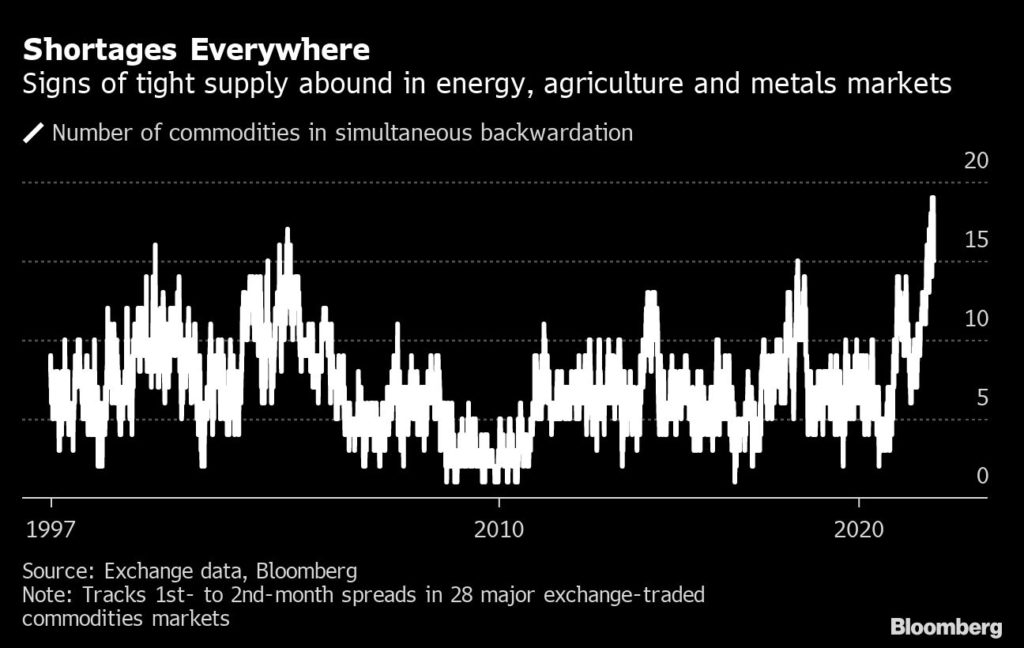
Goldman Sachs Group Inc.’s commodities guru says he has never seen markets this bullish before. These are the measures that explain what he was talking about.
There are more commodities futures contracts trading in backwardation — a market structure that indicates scarcity — than at any point since at least 1997. That’s a total of 19 out of 28 raw materials encompassing everything from energy to grains, according to data compiled by Bloomberg.

Commodities trade in backwardation, where near-term prices are stronger than those further out, when they are in short supply. On Monday, Goldman analyst Jeff Currie said the world was in the midst of “a molecule crisis.”
“We’re out of everything, I don’t care if it’s oil, gas, coal, copper, aluminum, you name it we’re out of it,” Currie said in a Bloomberg TV interview on Monday. Futures curves are pricing in shortages, the like of which he’s not seen in 30 years, he added.
The strength comes amid a red-hot market for raw materials that has seen the Bloomberg Commodity Spot Index surge to fresh highs already this year. In energy markets, strong demand for oil and gas has outpaced the ability for supply to keep pace. Metals prices have been also buoyed by supply shortages across the globe, particularly as consumption grows amid a push toward cleaner energy. In agriculture, crop output has been capped by bad weather, with dryness curbing soybean prospects across South America.
“At the heart of all this is the energy transition, it’s going to impact commodities for the foreseeable future,” said Daniel Hynes, a senior strategist at Australia & New Zealand Banking Group Ltd. “Spare capacity is relatively low and it just can’t make up for the potential risk to supply.”
(By Mark Burton and Alex Longley, with assistance from Megan Durisin)
Comments